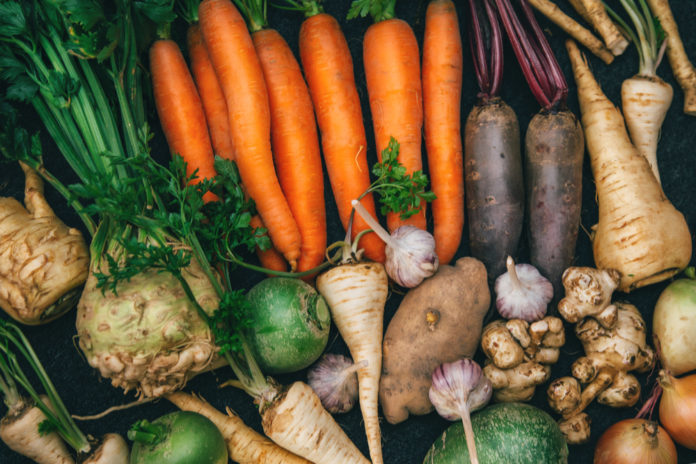Root Vegetables Health Benefits
Commonly known types of root vegetables include potatoes, sweet potatoes, carrots, parsnips, beets, and radishes. Out of entire pool of colorful veggies, root vegetables are regularly recognized as starches and complex carbohydrates. Compared to simple carbs, complex carbs are generally digested, absorbed more slowly, and keep blood sugar levels sustained and consistent. And while the nutritional content is dependent on the type of root vegetable itself, they are all an excellent source of fiber and supply healthy doses of vitamins A and C, potassium, folate, and manganese. The cultivation of nutrients has transpired into countless health benefits, including the promotion of digestive, heart, eye, skin, and immune health.
How to Choose, Store, and Prepare Root Vegetables
Described below are general guidelines to choose, store, and prepare root vegetables.
Choosing
When it comes to choosing root vegetables, generally the firmer the better. The skin should be free of any rotting or blemishing, smooth to the touch, and baring their natural color. Fresh root veggies mostly display intact greens that are also free of any recognizable spoiling.
Storing
If the greens are still intact, and you do not plan to use either soon, it is suggested to separate the two, as the greens can pull out moisture from the root veggie. Store the greens in a Ziploc bag and in the fridge; and when it comes to the veggie, general recommendations suggest their preferred storage is similar to their upbringing, stored in a dark and dry climate. Some root veggies, including carrots and beets, appreciate the chill of a refrigerator.
Preparing
Whether consumed raw, roasted, or baked, there are countless ways to prepare root veggies!
- Raw
Although biting into a raw potato may not be the most appetizing, other types of root vegetable are enjoyed in their natural, unchanged form (after a rinse and scrub, of course)! Radishes, carrots, and beets are just a few among the root veggies that are commonly enjoyed on their own or thrown onto salads and sandwiches for added crunch.
- Roasted
Going solo or as a blend, root veggies are commonly roasted to pair with a lean protein at dinnertime. This roasted winter root veggie recipe features carrots, sweet potatoes, and parsnips, offering a hearty, yet nutrient-dense side for eggs, chicken, and other favorite lean proteins.
- Pickled
Beets and radishes are commonly enjoyed in their pickled form, including in this easy pickled and spicy root vegetables recipe.
- Steamed and Boiled
Steaming and boiling root veggies is a valuable way to breakdown their firm consistency, also providing an alternative avenue to prepare them. For instance, mashed potatoes and this creamy carrot and sweet potato soup need the boiling process to soften their texture.
- Grilled
Fire up the grill for this rotisserie pan potatoes and root vegetables recipe! Root veggies and herbs are also easily adaptable, so use favorite ingredients to satisfy your flavor pallet.
- Sautéed
Sauteing is a preparation method that softens and cooks food, doing so with a little oil or fat in a pan over relatively high heat. Preparing with olive or other vegetable oil not only offers flavor to the root veggie, but amplifies their nutritional content.
- Baked
Root veggies may not appear as a traditional ingredient for baked goods, though they make nutritious additions to carrot cake and even sweet potato pancakes.






